Search Result
Results for "
neuromuscular
" in MedChemExpress (MCE) Product Catalog:
1
Biochemical Assay Reagents
1
Isotope-Labeled Compounds
| Cat. No. |
Product Name |
Target |
Research Areas |
Chemical Structure |
-
- HY-B0429
-
|
|
nAChR
|
Neurological Disease
|
|
Pancuronium dibromide, a bis-quaternary steroid, is a neuromuscular relaxant. Pancuronium dibromide inhibits neuromuscular transmission by competing with acetylcholine for binding sites on nACh receptors. Pancuronium dibromide also inhibits cardiac muscarinic receptors and has a sympathomimetic action .
|
-
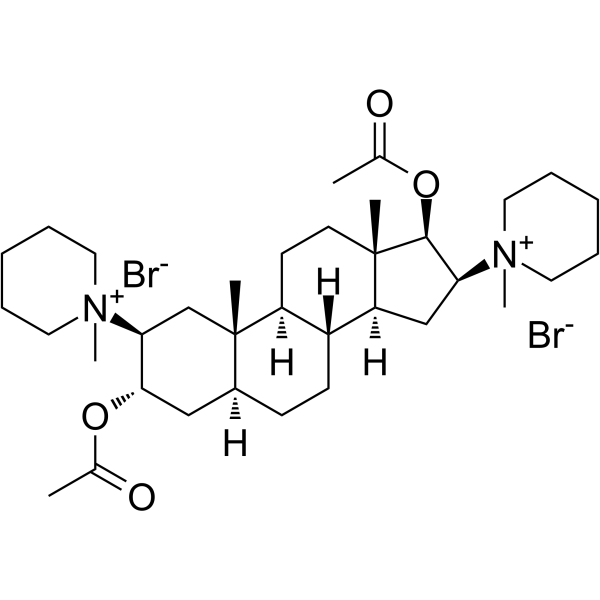
-
- HY-U00310
-
|
|
Others
|
Neurological Disease
|
|
Neuromuscular-targeting compound 1, extracted from patent WO2009099594 A1, Paragraph 0100, is useful in treatment of neuromuscular diseases.
|
-
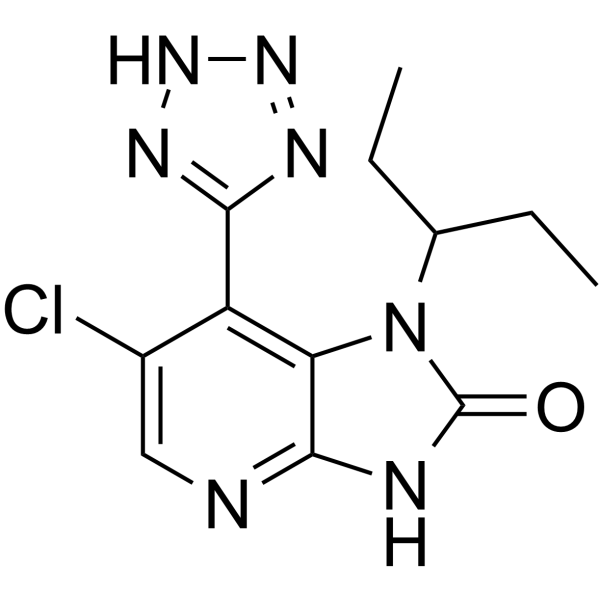
-
- HY-U00385
-
|
|
Others
|
Neurological Disease
|
|
Neuromuscular Disorder-Targeting Compound 1 is used in the research of neuromuscular disorders such as symptoms of fibromyalgia syndrome and chronic fatigue syndrome.
|
-
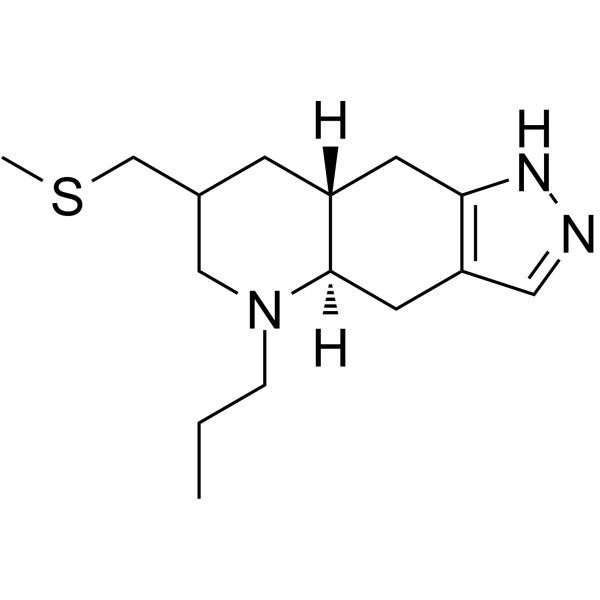
-
- HY-A0215
-
|
BW-A 938U; Nuromax
|
nAChR
|
Neurological Disease
|
|
Doxacurium chloride (BW A938U) is a potent non-depolarizing neuromuscular blocking agent. Doxacurium chloride binds to cholinergic receptors to antagonize acetylcholine, resulting in a block of neuromuscular transmission. Doxacurium chloride can be used for the research of neurological diseases .
|
-
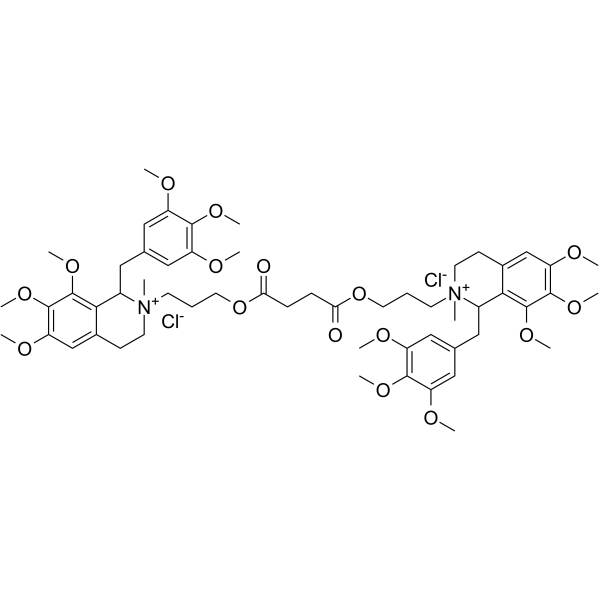
-
- HY-119335
-
|
S-2703
|
Sodium Channel
|
Others
|
|
Cyphenothrin (S-2703) is a pyrethroid pesticide. Cyphenothrin acts on the neuromuscular system of insects, intervening in the gating mechanism of sodium channels .
|
-

-
- HY-B1348
-
|
|
Drug Metabolite
|
Neurological Disease
|
|
Dimethadione is the primary metabolite of trimethadione. Dimethadione causes depression of neuromuscular transmission. Dimethadione primarily decreases transmitter release from the nerve terminal .
|
-
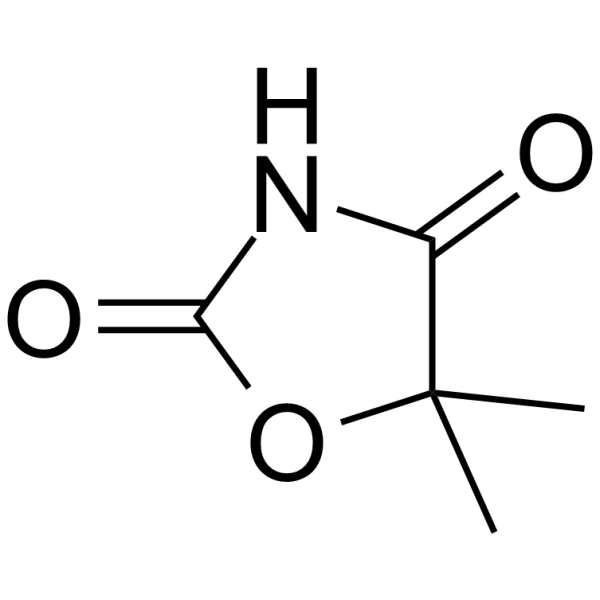
-
- HY-B0292A
-
|
BW-33A
|
nAChR
|
Neurological Disease
Inflammation/Immunology
Cancer
|
|
Atracurium (BW-33A) besylate is a potent, competitive and non-depolarizing neuromuscular blocking agent. Atracurium besylate also is an AChR receptor antagonist. Atracurium besylate induces bronchoconstriction and neuromuscular blockade. Atracurium besylate promotes astroglial differentiation .
|
-
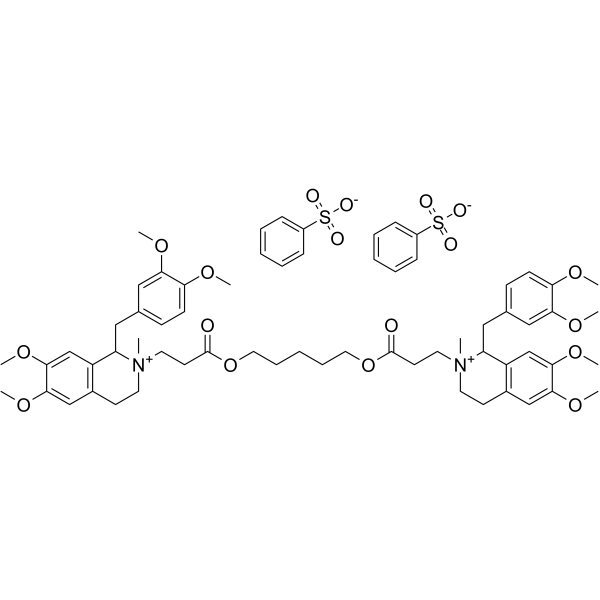
-
- HY-B0079
-
|
Org25969
|
Others
|
Cardiovascular Disease
Neurological Disease
|
|
Sugammadex sodium is a synthetic γ-cyclodextrin derivative, and acts as a reversal agent for neuromuscular block. Sugammadex sodium shows nephroprotective effect in ischemia-reperfusion injury .
|
-
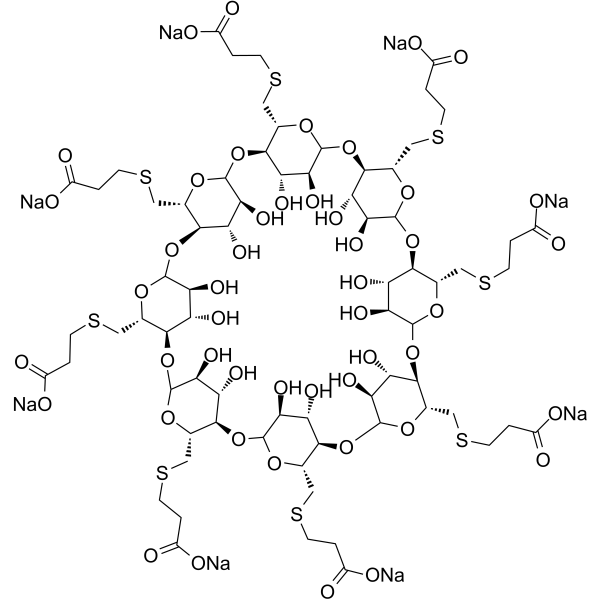
-
- HY-B0079A
-
|
Org25969 free acid
|
Others
|
Cardiovascular Disease
Neurological Disease
|
|
Sugammadex is a synthetic γ-cyclodextrin derivative, and acts as a reversal agent for neuromuscular block. Sugammadex shows nephroprotective effect in ischemia-reperfusion injury .
|
-
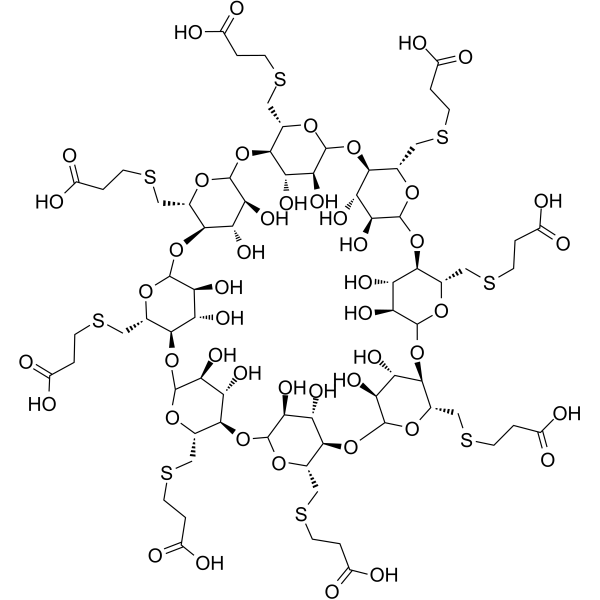
-
- HY-137788
-
|
|
nAChR
|
Neurological Disease
|
|
α-Conotoxin GI has high affinity for nAChR.α-Conotoxin GI is a short peptide toxin that can be isolated from the venom of Conus geographus.α-Conotoxin GI has the similar activity with neuromuscular blocking agent .
|
-

-
- HY-B0743A
-
|
|
nAChR
|
Neurological Disease
|
|
Pipecuronium bromide is a potent long-acting nondepolarizing steroidal neuromuscular blocking agent (NMBA), and a bisquaternary ammonium compound. Pipecuronium bromide is a powerful competitive nAChR antagonist with a Kd of 3.06 μM .
|
-

-
- HY-B1700A
-
|
|
nAChR
|
Neurological Disease
|
|
Mivacurium dichloride is a benzylisoquinoline derivative and is a short-acting non-depolarizing neuromuscular blocking agent and skeletal muscle relaxant. Mivacurium dichloride couples with the nAChR to reduce or inhibit the depolarizing effect of acetylcholine on the terminal disc of the muscle cell .
|
-
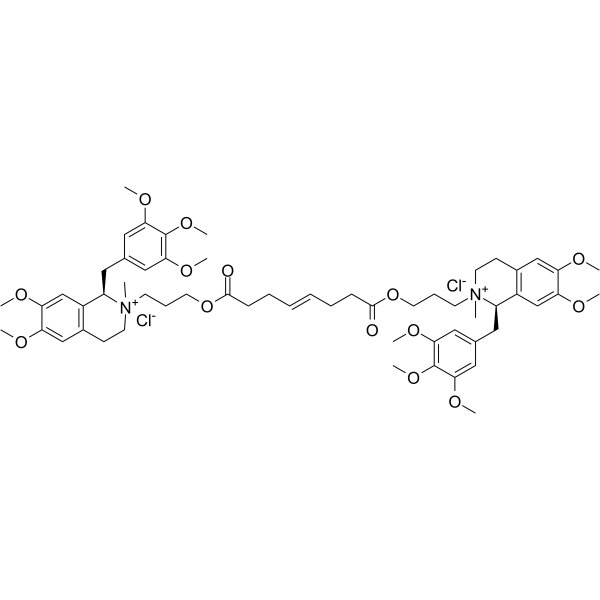
-
- HY-124047
-
|
|
Cholinesterase (ChE)
|
Neurological Disease
|
|
RX 67668 is a potent cholinesterase inhibitor with an IC50 of 5 μM for both acetylcholinesterase (AChE) and butyrylcholinesterase. RX 67668 can reverse the neuromuscular blockade induced by D-tubocurarine. RX 67668 is a muscle relaxant used to relieve skeletal muscle fatigue .
|
-
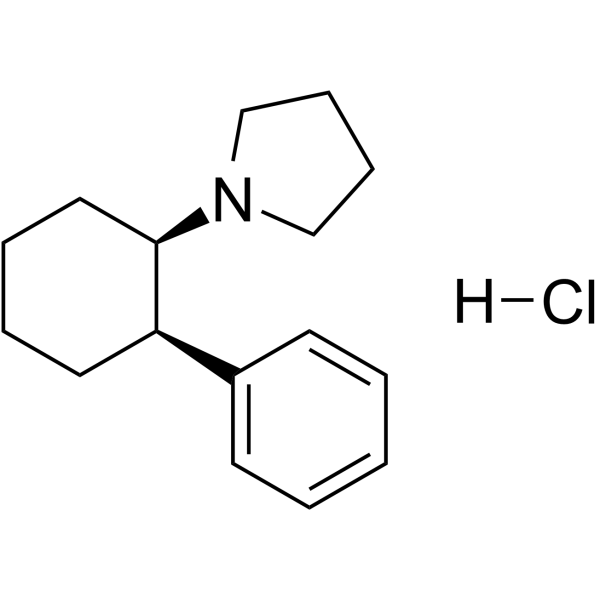
-
- HY-103530
-
|
|
GABA Receptor
|
Neurological Disease
|
|
CGP 35348 is a selective, brain penetrant, centrally active GABAB receptor antagonist with an EC50 of 34 μM. CGP 35348 shows affinity for the GABAB receptor only . CGP 35348 has a potential to improve neuromuscular coordination and spatial learning in albino mouse following neonatal brain damage .
|
-
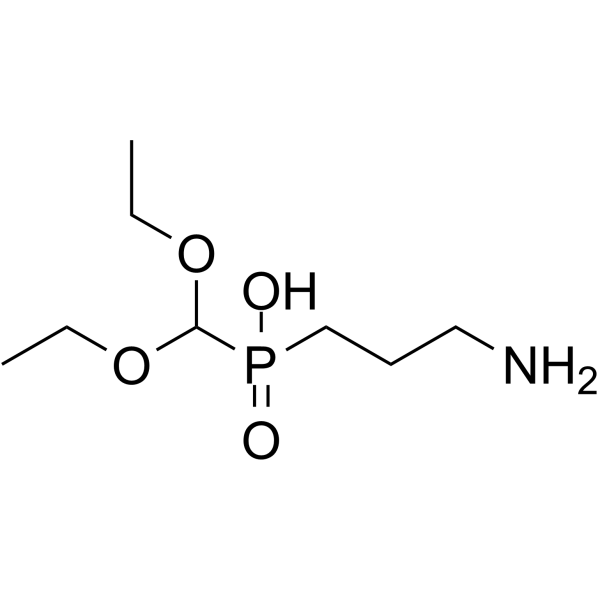
-
- HY-B2152
-
|
Hemicholinium dibromide
|
Cholinesterase (ChE)
|
Neurological Disease
|
|
Hemicholinium 3 is a competitive inhibitor of the high affinity choline transporter (HACU) with a Ki value of 25 nM. Hemicholinium 3, a neuromuscular blocking agent which inhibits the synthesis and the release of acetylcholine (ACh) . Hemicholinium 3 inhibits the Epibatidine-evoked contraction and [ 3H]acetylcholine release with IC50s of 897 nM and 693 nM, respectively .
|
-
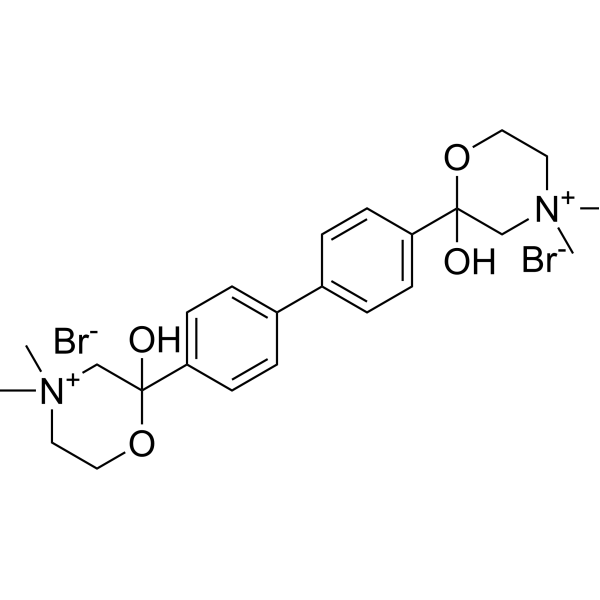
-
- HY-14946
-
|
3,4-Diaminopyridine
|
Potassium Channel
|
Neurological Disease
|
|
Amifampridine (3,4-Diaminopyridine) is an orally active, potent and cell permeable voltage-gated potassium (Kv) channel blocker (PCB). Amifampridine is efficacy in the reversal of BoNT/A (HY-P79153) intoxication. Amifampridine increases transmitter release from neuromuscular junctions (NMJs). Amifampridine can be used for Lambert-Eaton myasthenic syndrome (LEMS) research .
|
-
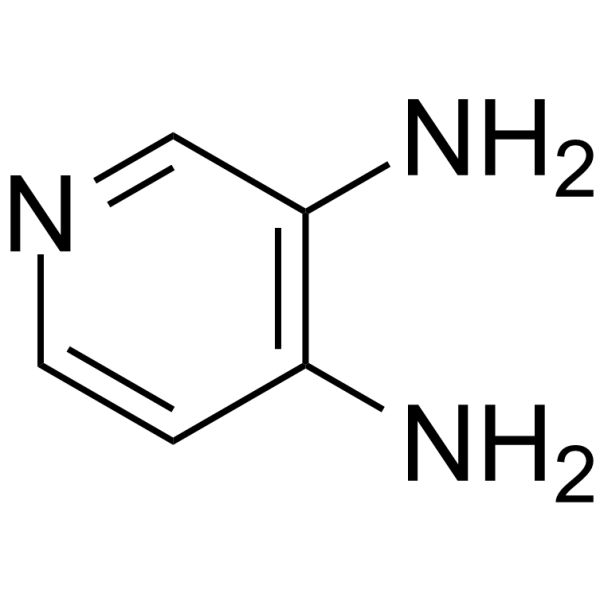
-
- HY-14946A
-
|
3,4-Diaminopyridine phosphate
|
Potassium Channel
|
Neurological Disease
|
|
Amifampridine (3,4-Diaminopyridine) phosphate is an orally active, potent and cell permeable voltage-gated potassium (Kv) channel blocker (PCB). Amifampridine phosphate is efficacy in the reversal of BoNT/A (HY-P79153) intoxication. Amifampridine phosphate increases transmitter release from neuromuscular junctions (NMJs). Amifampridine phosphate can be used for Lambert-Eaton myasthenic syndrome (LEMS) research .
|
-
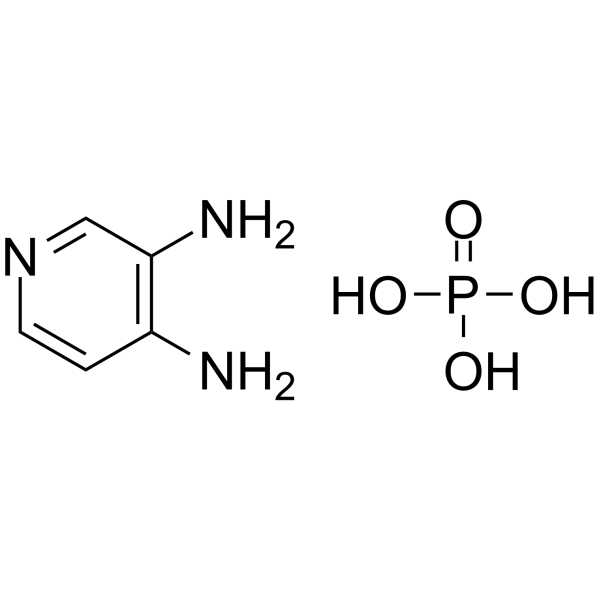
-
- HY-13596
-
|
51W89 besylate; Cisatracurium besilate
|
nAChR
Autophagy
|
Neurological Disease
Cancer
|
|
Cisatracurium besylate (51W89) is a nondepolarizing neuromuscular blocking agent, antagonizing the action of acetylcholine by inhibiting neuromuscular transmission.
|
-

-
- HY-B0570
-
-
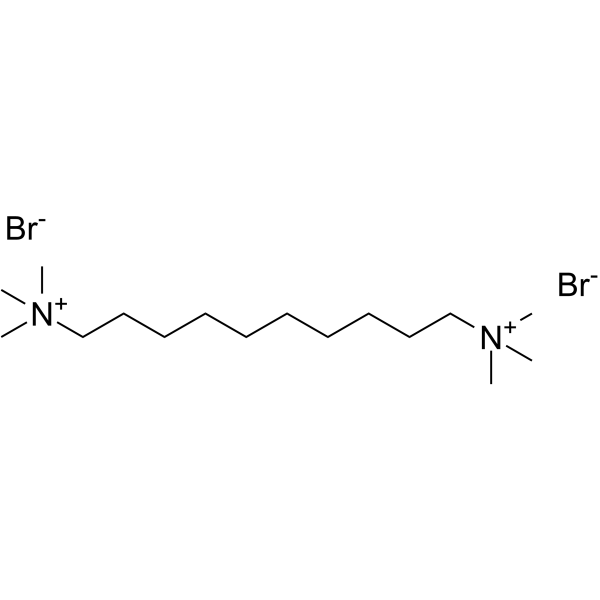
-
- HY-U00162
-
-
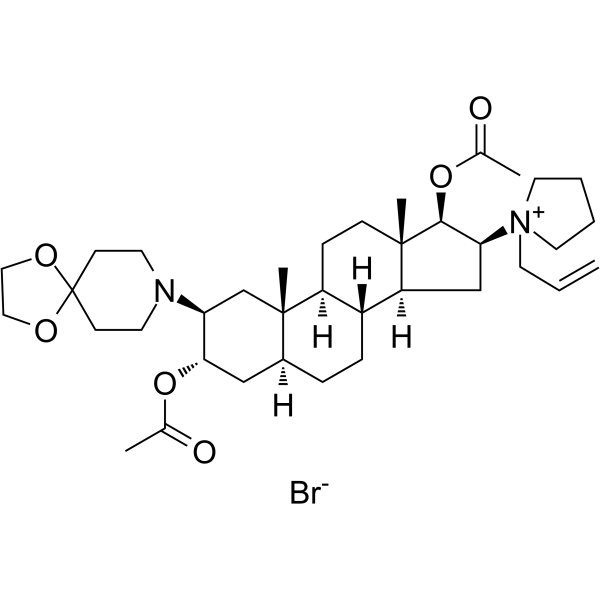
-
- HY-B0292
-
|
BW-33A free acid
|
|
|
|
tracurium (BW-33A free acid) is a potent, competitive and non-depolarizing neuromuscular blocking agent.Atracurium also is an AChR receptor antagonist. Atracurium induces bronchoconstriction and neuromuscular blockade. Atracurium promotes astroglial differentiation .
|
-
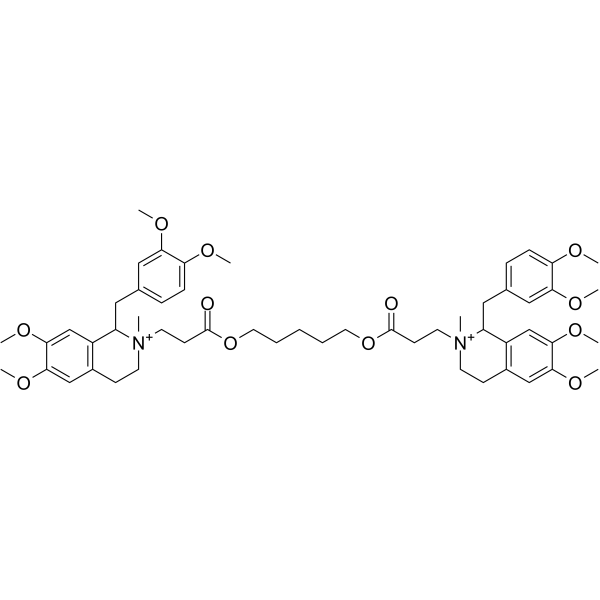
-
- HY-17033
-
|
Org-9426
|
Others
|
Neurological Disease
|
|
Rocuronium (Org-9426) is an aminosteroid non-depolarizing neuromuscular blocker or muscle relaxant used in modern anaesthesia.
|
-

-
- HY-B0429R
-
|
|
nAChR
|
Neurological Disease
|
|
Pancuronium (dibromide) (Standard) is the analytical standard of Pancuronium (dibromide). This product is intended for research and analytical applications. Pancuronium dibromide, a bis-quaternary steroid, is a neuromuscular relaxant. Pancuronium dibromide inhibits neuromuscular transmission by competing with acetylcholine for binding sites on nACh receptors. Pancuronium dibromide also inhibits cardiac muscarinic receptors and has a sympathomimetic action .
|
-
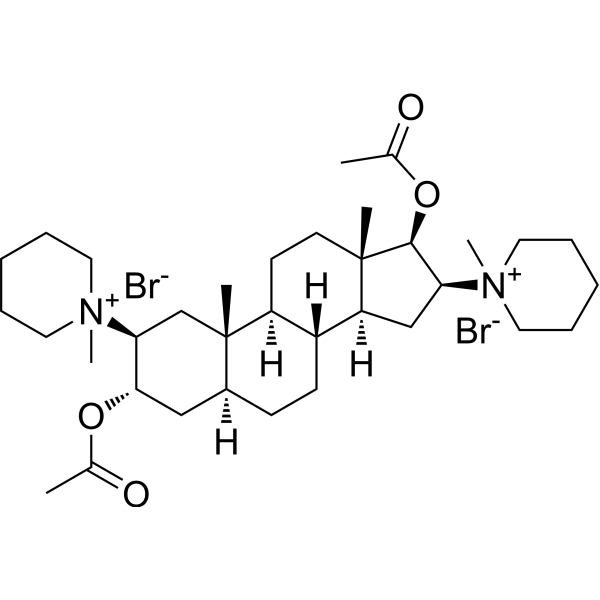
-
- HY-16423
-
|
Org 9487
|
mAChR
|
Neurological Disease
|
|
Rapacuronium bromide (Org 9487), a non-depolarizing neuromuscular blocker, is an allosteric modulator of muscarinic acetylcholine receptor (mAChR) .
|
-
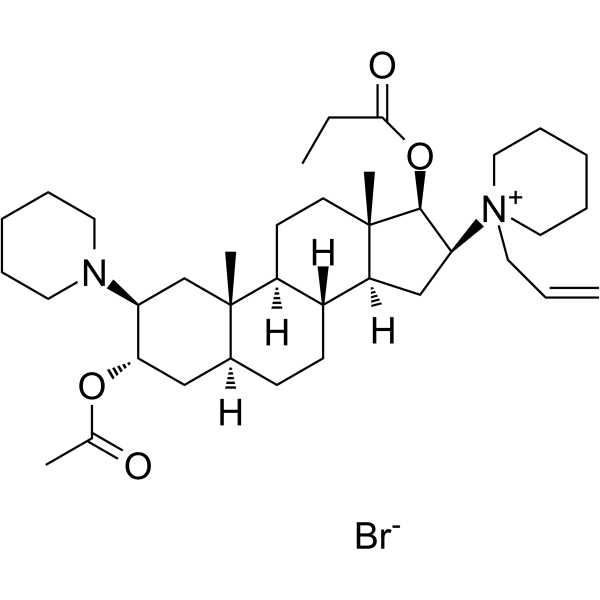
-
- HY-B0823
-
|
|
nAChR
|
Neurological Disease
|
|
Acetamiprid is a neonicotinoid insecticide used worldwide. Acetamiprid is a nicotinic acetylcholine receptor (nAChR) agonist, and is shown to be associated with neuromuscular and reproductive disorders .
|
-
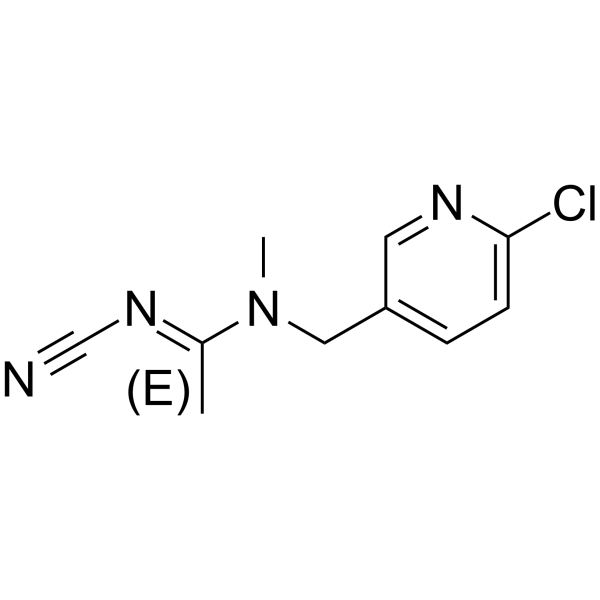
-
- HY-D1516
-
|
|
Fluorescent Dye
|
Others
|
|
NerveGreen C3 is a cationic styrene based fluorescent dye. NerveGreen C3 can be used to track synaptic activity at neuromuscular junctions or synapses .
|
-

-
- HY-B1552B
-
|
|
|
|
|
Benzoquinonium dibromide is a nicotinic acetylcholine receptors (nAChRs) antagonist, with an IC50 of 0.46 μM. Benzoquinonium dibromide can block neuromuscular and ganglionic transmission .
|
-
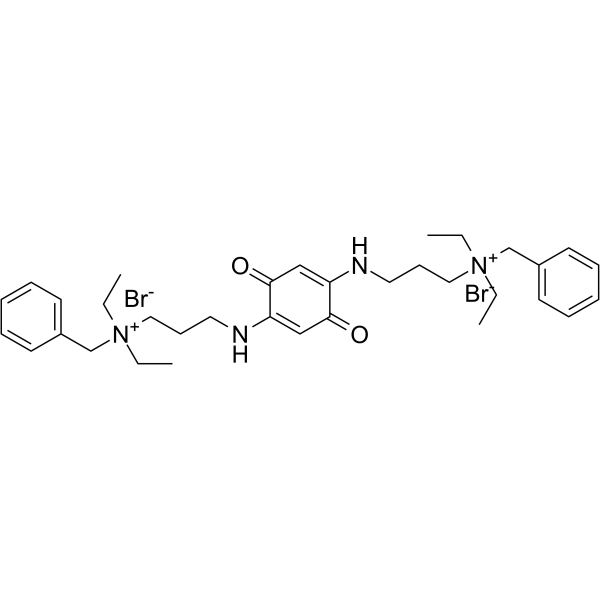
-
- HY-115766
-
|
|
nAChR
|
Neurological Disease
|
|
Anabaseine is a non-selective nicotinic agonist. Anabaseine stimulates all AChRs, preferentially stimulates skeletal muscle and brain α7 subtypes . Anabaseine is also a weak partial agonist at α4β2 nAChRs .
|
-
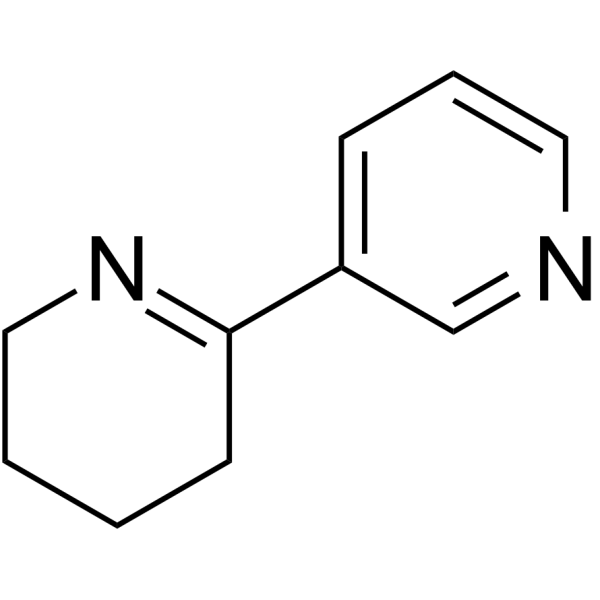
-
- HY-B0882S
-
|
|
Cholinesterase (ChE)
|
Neurological Disease
|
|
Edrophonium-d5 (chloride) is the deuterium labeled Edrophonium chloride. Edrophonium chloride is a readily reversible acetylcholinesterase inhibitor; prevents breakdown of the neurotransmitter acetylcholine and acts by competitively inhibiting the enzyme acetylcholinesterase, mainly at the neuromuscular junction.
|
-
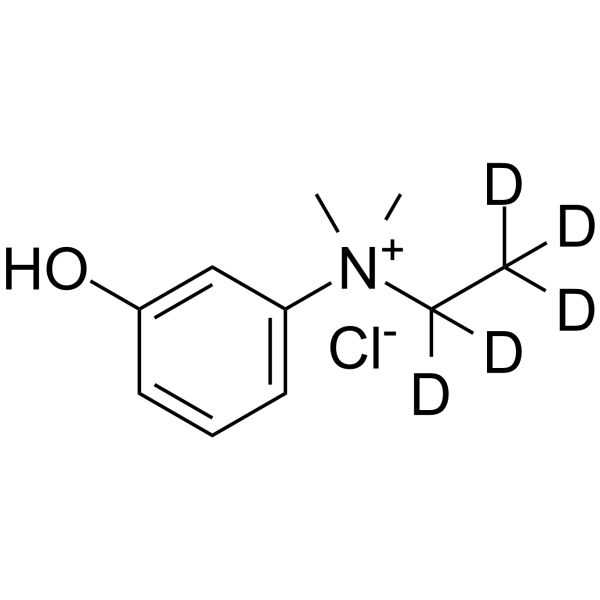
-
- HY-17440
-
|
ORG 9426 Bromide
|
nAChR
|
Neurological Disease
Cancer
|
|
Rocuronium Bromide (ORG 9426 Bromide) is an aminosteroid non-depolarizing neuromuscular blocker or muscle relaxant used in modern anaesthesia, to facilitate endotracheal intubation and to provide skeletal musclerelaxation during surgery or mechanical ventilation.
|
-
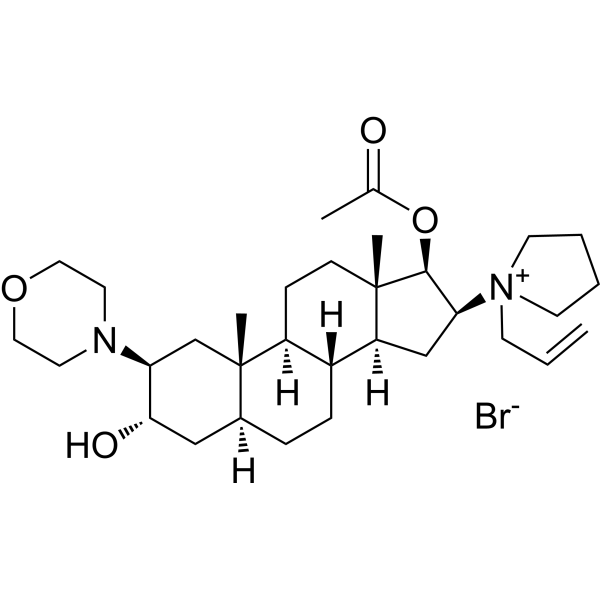
-
- HY-B0118A
-
|
ORG NC 45
|
nAChR
|
Neurological Disease
Cancer
|
|
Vecuronium (ORG NC 45) bromide is a non-depolarizing neuromuscular blocking agent that also acts as a nicotinic acetylcholine receptor (nAChR) inhibitor, a muscle relaxant, and can be used for pre-surgical anesthesia .
|
-

-
- HY-148412A
-
|
EN101 sodium; ODN 7040 sodium; BL 7040 sodium
|
Cholinesterase (ChE)
|
Others
|
|
Monarsen sodium is a synthetic 20-base antisense oligodeoxynucleotide directed against the human AChE gene. Monarsen sodium is used in the study of Autoimmune myasthenia gravis (MG), a neuromuscular disorder caused by autoantibodies directed against the acetylcholine receptor (AChR).
|
-
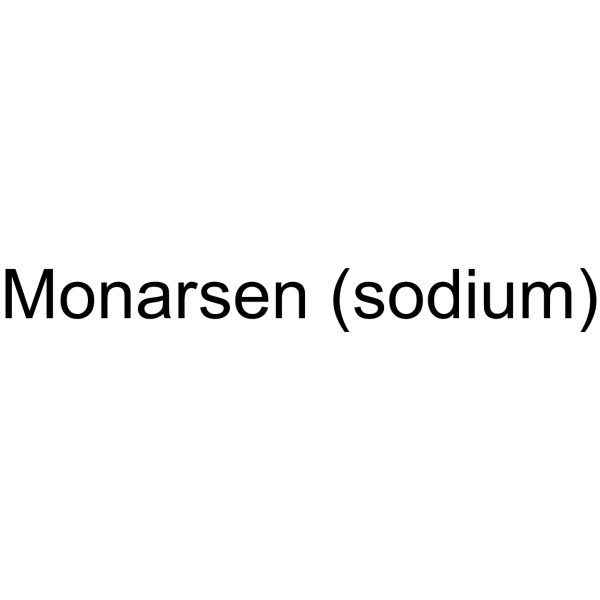
-
- HY-148412
-
|
EN101; ODN 7040; BL 7040
|
Cholinesterase (ChE)
|
Others
|
|
Monarsen (EN101) is a synthetic 20-base antisense oligodeoxynucleotide directed against the human AChE gene. Monarsen is used in the study of Autoimmune myasthenia gravis (MG), a neuromuscular disorder caused by autoantibodies directed against the acetylcholine receptor (AChR).
|
-
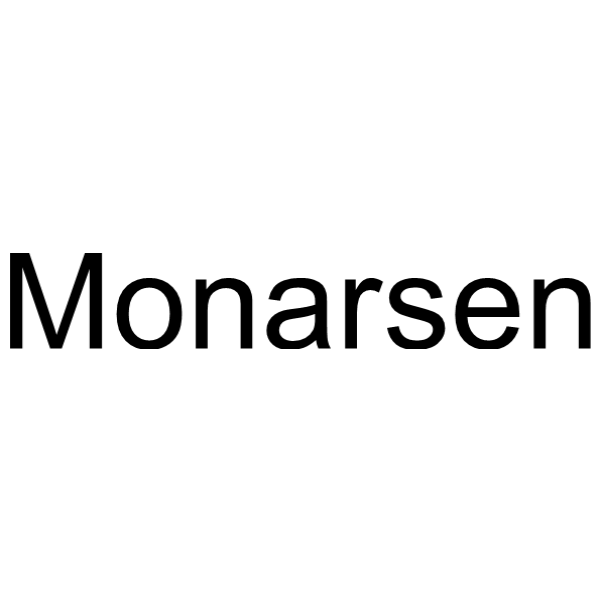
-
- HY-13831
-
|
BMS-646786
|
P2Y Receptor
|
Neurological Disease
Cancer
|
|
BPTU (BMS-646786) is a non-nucleotide P2Y1 receptor allosteric antagonist with antithrombotic activity. BPTU is able to block the P2Y1 receptor located at the neuromuscular junction of the gastrointestinal tract .
|
-
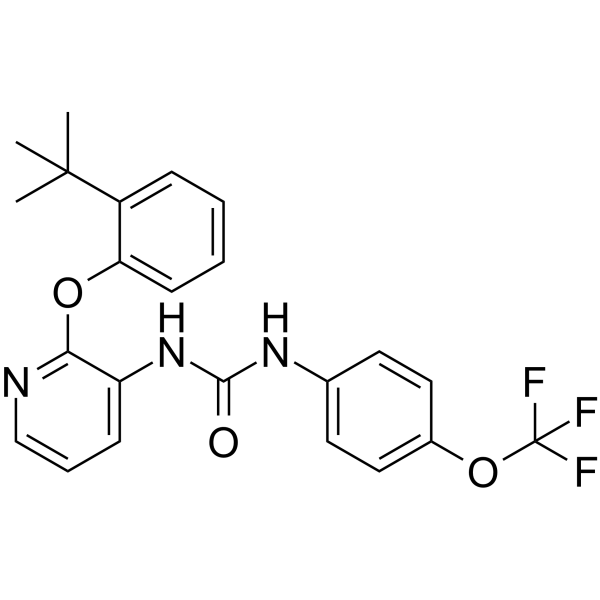
-
- HY-P1952A
-
|
|
Sodium Channel
|
Neurological Disease
|
|
µ-Conotoxin-CnIIIC acetate, a 22-residue conopeptide, is a potent antagonist of the voltage-gated NaV1.4 sodium channel with an IC50 of 1.3 nM acting at the neuromuscular junction. µ-Conotoxin-CnIIIC acetate has myorelaxant and analgesic effects .
|
-
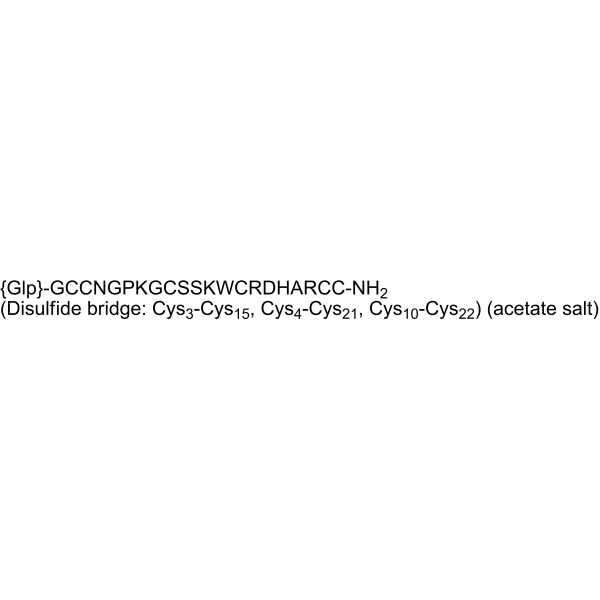
-
- HY-161118
-
|
|
Others
|
Neurological Disease
|
|
MB327 is a bipyridine nonoxime compound that restores neuromuscular function. MB327 restores the activity of nicotinamide acetylcholine receptors (nAChRs) for carbachol desensitization in a typical type II PAM manner. MB327 can neutralize nerve agent poisoning .
|
-
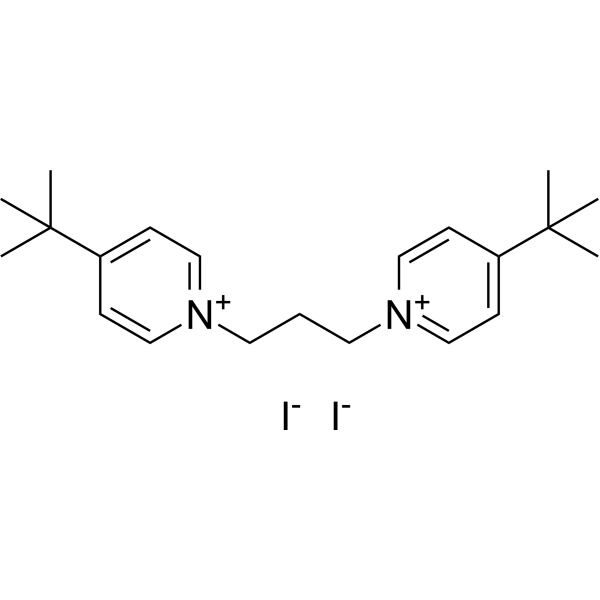
-
- HY-17440R
-
|
ORG 9426 Bromide (Standard)
|
nAChR
|
Neurological Disease
Cancer
|
|
Rocuronium (Bromide) (Standard) is the analytical standard of Rocuronium (Bromide). This product is intended for research and analytical applications. Rocuronium Bromide (ORG 9426 Bromide) is an aminosteroid non-depolarizing neuromuscular blocker or muscle relaxant used in modern anaesthesia, to facilitate endotracheal intubation and to provide skeletal musclerelaxation during surgery or mechanical ventilation.
|
-

-
- HY-158183
-
|
|
Chloride Channel
|
Others
|
|
NMD670 is an orally active partial inhibitor of the skeletal muscle-specific chloride channel ClC-1. NMD670 increases muscle excitability in response to movement commands, enhances neuromuscular transmission, restores muscle function and improves muscle mobility. NMD670 has a favorable safety profile and improves muscle function in rats in a MG rat model .
|
-
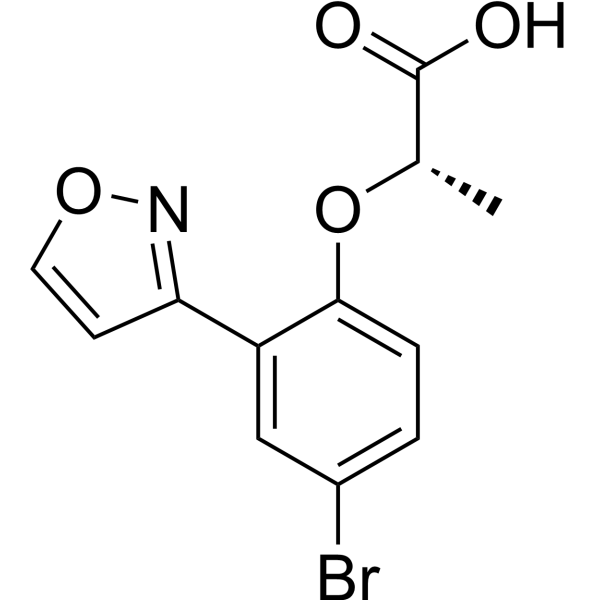
-
- HY-12546
-
|
Brevetoxin-2; PbTx-2
|
Sodium Channel
|
Neurological Disease
|
|
Brevetoxin B (Brevetoxin-2; PbTx-2) is a polyketide neurotoxin produced by Karenia species and other dinoflagellates. Brevetoxin B binds to site 5 on the alpha subunit of voltage-gated sodium channels (IC50=15 nM) on neurons at the neuromuscular junction, causing the channel to open irreversibly at potentials more negative than normal, discharging action potentials repetitively.
|
-

-
- HY-118533A
-
|
WIN 8077 dichloride tetrahydrate
|
Cholinesterase (ChE)
|
Neurological Disease
|
|
Ambenonium (WIN 8077) dichloride tetrahydrate is an orally active and reversible inhibitor of Acetyicholinesterase (AChE) with high affinity. Ambenonium dichloride tetrahydrate inhibits human AChE with an IC50 value of 0.7 nM (hAChE) .
|
-
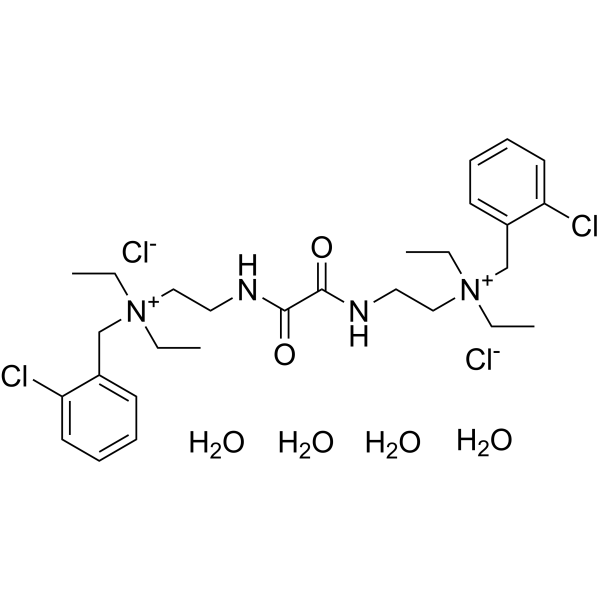
-
- HY-151972
-
|
|
Epigenetic Reader Domain
|
Cardiovascular Disease
Inflammation/Immunology
Cancer
|
|
BRD4 Inhibitor-25 is a BRD4 inhibitor with IC50s of 0.82 μM, 1.94 μM for BD1 and BD2 domains of BRD4. BRD4 Inhibitor-25 induces apoptotic and autophagy cell death in ovarian cancer cells. BRD4 Inhibitor-25 can be used in the research of cancers, cardiovascular, neuromuscular and inflammatory disorders.
|
-

-
- HY-N6018
-
|
|
Caspase
TNF Receptor
SOD
Reactive Oxygen Species
|
Inflammation/Immunology
Cancer
|
|
Beta-Eudesmol has anticancer and anti-inflammatory activities. Beta-Eudesmol can induce apoptosis. Beta-Eudesmol is a neostigmine antagonist. Beta-Eudesmol can antagonize neostigmine-induced neuromuscular failure. Beta-Eudesmol can be used in the study of sepsis diseases. Beta-Eudesmol is a sesquiterpene-like compound that can be extracted from the rhizome of Atractylodes lancea .
|
-
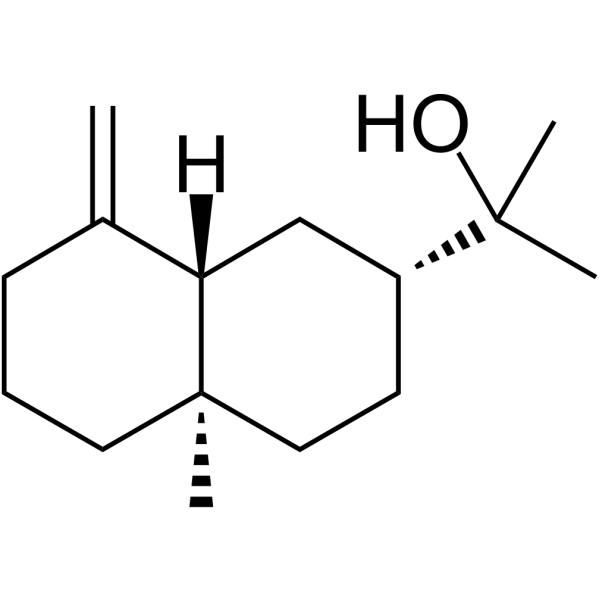
-
- HY-P2860
-
|
ACHE; EC 3.1.1.7
|
Cholinesterase (ChE)
|
Neurological Disease
|
|
Acetylcholinesterase, Fly head (ACHE; EC 3.1.1.7) is a cholinergic enzyme mainly found in neuromuscular junctions and cholinergic type chemical synapses used in biochemical research. Acetylcholinesterase, Fly head catalyzes the breakdown or hydrolysis of acetylcholine and some other choline esters that act as neurotransmitters into acetate and choline. Acetylcholinesterase, Fly head's main role is to terminate neuronal transmission and signaling between synapses to prevent ACh spread and activation of nearby receptors .
|
-
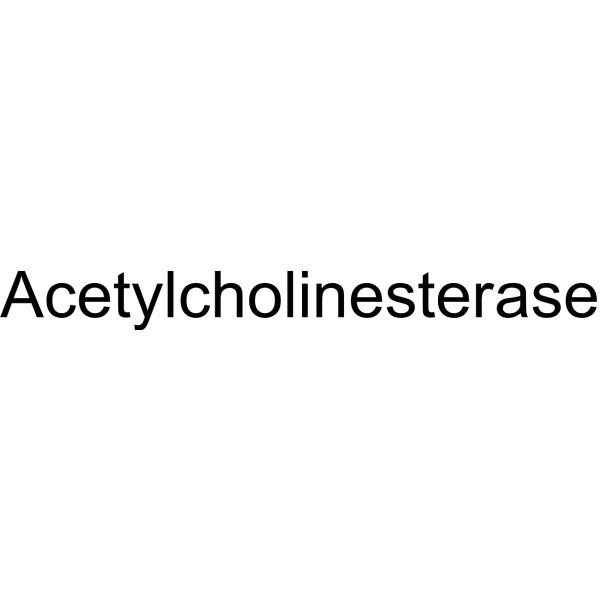
-
- HY-P0203
-
|
CGRP (83-119), mouse, rat
|
CGRP Receptor
|
Cardiovascular Disease
Metabolic Disease
Inflammation/Immunology
|
|
α-CGRP (mouse, rat), a neuropeptide (calcitonin gene-related peptide (CGRP)) mainly expressed in neuromuscular junction, is a potent vasodilator. α-CGRP (mouse, rat) can lead to a fall in blood pressure and an increase in heart rate by peripheral administration, also relax colonie smooth muscle. α-CGRP (mouse, rat) has the potential in cardiovascular, pro-inflammatory, migraine and metabolic studies .
|
-
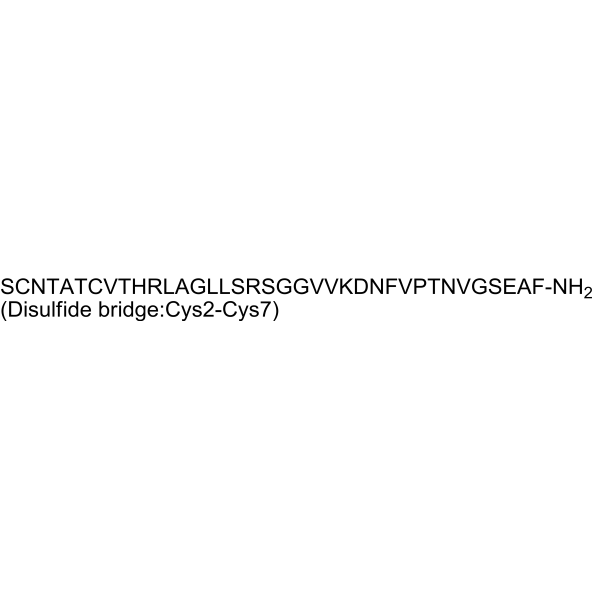
-
- HY-P5149
-
|
αC-PrXA
|
nAChR
|
Neurological Disease
|
|
αC-Conotoxin PrXA is a paralytic peptide neurotoxin and a competitive nAChR antagonist, with IC50s of 1.8 nM (α1β1εδ, adult) and 3.0 nM (α1β1γδ, fetal), respectively. αC-Conotoxin PrXA competes with α-bungarotoxin at the α/δ and α/γ subunit interfaces of the nAChR, shows high specificity against neuromuscular nAChR .
|
-

-
- HY-P0203A
-
|
CGRP (83-119), mouse, rat TFA
|
CGRP Receptor
|
Cardiovascular Disease
Metabolic Disease
Inflammation/Immunology
|
|
α-CGRP (mouse, rat) TFA, a neuropeptide (calcitonin gene-related peptide (CGRP)) mainly expressed in neuromuscular junction, is a potent vasodilator. α-CGRP (mouse, rat) TFA can lead to a fall in blood pressure and an increase in heart rate by peripheral administration, also relax colonie smooth muscle. α-CGRP (mouse, rat) TFA has the potential in cardiovascular, pro-inflammatory, migraine and metabolic studies .
|
-
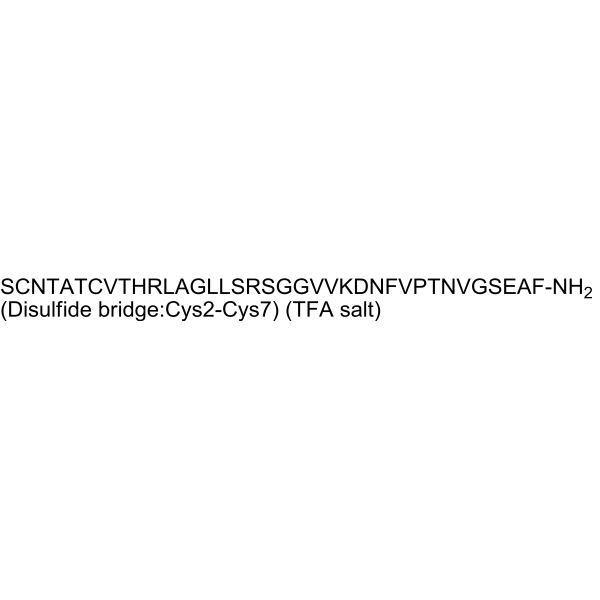
-
- HY-122140
-
|
|
Cholinesterase (ChE)
|
Neurological Disease
|
|
ACG548B (compound 24) is a potent inhibitor of acetyl- and butyrylcholinesterase (AChE and BChE) with IC50s of 1.78 and 0.496 μM, respectively. ACG548B has higher AChE affinity and selectivity over BChE and ChoK (choline kinase) .
|
-
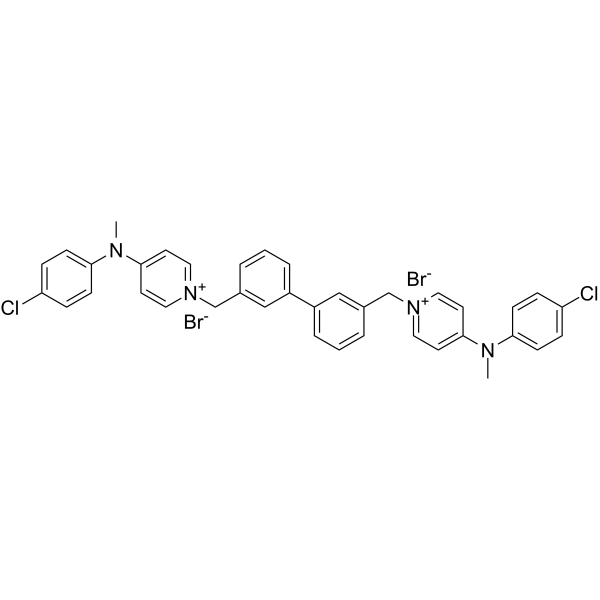
-
- HY-100919
-
|
WIN 8077 chloride
|
Cholinesterase (ChE)
|
Others
|
|
Ambenonium (WIN 8077) chloride is an orally active and reversible inhibitor of Acetyicholinesterase (AChE) with high affinity. Ambenonium chloride inhibits human AChE with an IC50 value of 0.7 nM (hAChE) .
|
-
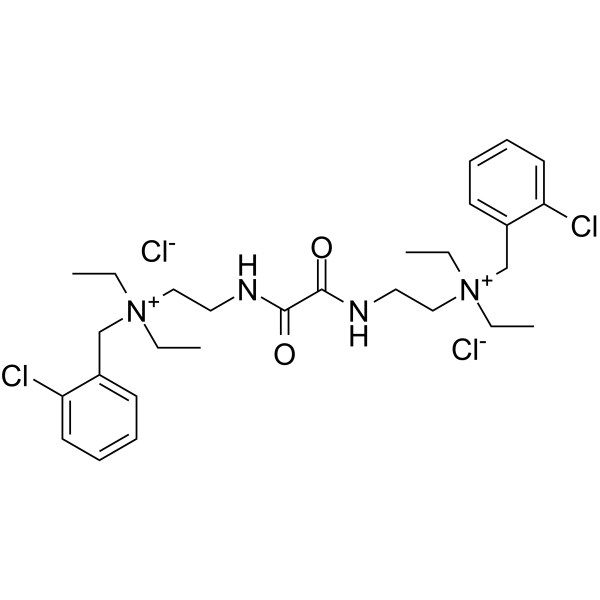
-
- HY-111793
-
|
|
CXCR
|
Neurological Disease
|
|
NUCC-390 is a novel and selective small-molecule CXCR4 receptor agonist. NUCC-390 induces internalization of CXCR4 receptors and acts in an opposite way of AMD3100 (HY-10046) . NUCC-390 promotes nerve recovery of function after neurodegeneration in vivo .
|
-
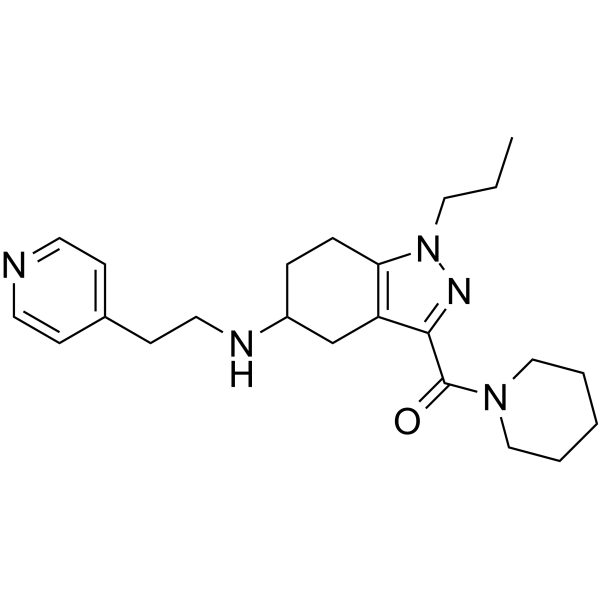
-
- HY-111793A
-
|
|
CXCR
|
Neurological Disease
|
|
NUCC-390 dihydrochloride is a novel and selective small-molecule CXCR4 receptor agonist. NUCC-390 dihydrochloride induces internalization of CXCR4 receptors and acts in an opposite way of AMD3100 (HY-10046) . NUCC-390 dihydrochloride promotes nerve recovery of function after neurodegeneration in vivo .
|
-
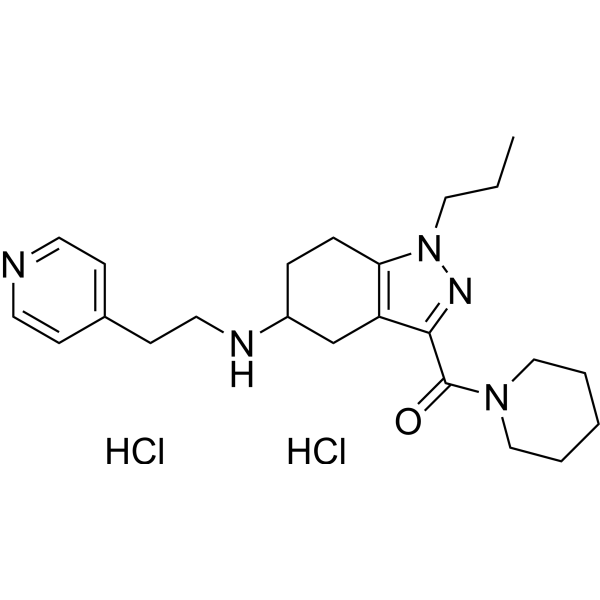
- HY-147332
-
|
|
Liposome
|
Neurological Disease
|
|
TCL053 is an ionizable lipid carrier and used to introduce active components, in particular nucleic acids, into cells with excellent efriciency. TCL053, together with DPPC (Dipalmitoylphosphatidylcholine), PEG-DMG (Polyethylene glycoldimyristoyl glycerol), and cholesterol, forms lipid nanoparticle (LNP) which is able to deliver Cas9 mRNA and sgRNA into skeletal muscle .
|
-
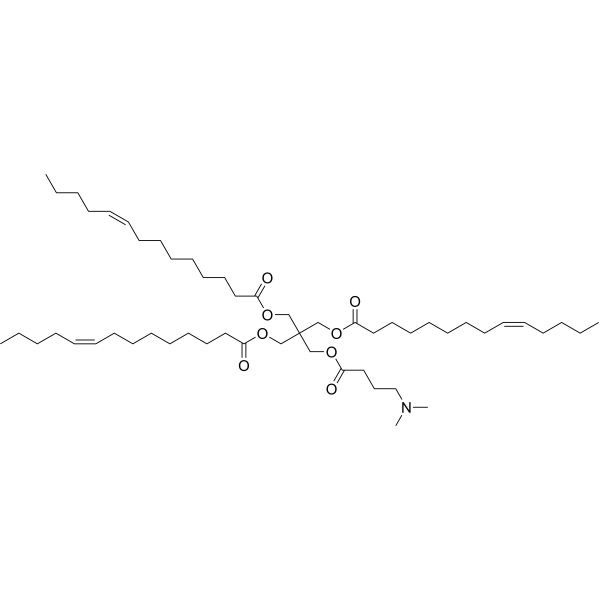
| Cat. No. |
Product Name |
Type |
-
- HY-D1516
-
|
|
Fluorescent Dyes/Probes
|
|
NerveGreen C3 is a cationic styrene based fluorescent dye. NerveGreen C3 can be used to track synaptic activity at neuromuscular junctions or synapses .
|
| Cat. No. |
Product Name |
Type |
-
- HY-147332
-
|
|
Drug Delivery
|
|
TCL053 is an ionizable lipid carrier and used to introduce active components, in particular nucleic acids, into cells with excellent efriciency. TCL053, together with DPPC (Dipalmitoylphosphatidylcholine), PEG-DMG (Polyethylene glycoldimyristoyl glycerol), and cholesterol, forms lipid nanoparticle (LNP) which is able to deliver Cas9 mRNA and sgRNA into skeletal muscle .
|
| Cat. No. |
Product Name |
Target |
Research Area |
-
- HY-P1952A
-
|
|
Sodium Channel
|
Neurological Disease
|
|
µ-Conotoxin-CnIIIC acetate, a 22-residue conopeptide, is a potent antagonist of the voltage-gated NaV1.4 sodium channel with an IC50 of 1.3 nM acting at the neuromuscular junction. µ-Conotoxin-CnIIIC acetate has myorelaxant and analgesic effects .
|
-
- HY-P0033
-
|
Acetyl hexapeptide-3
|
Peptides
|
Neurological Disease
|
|
Argireline (Acetyl hexapeptide-3) is a non-toxic, skin-permeable, antiwrinkle peptide. Argireline significantly inhibits Ca 2+ dependent neurotransmitter release (acetylcholine) at the neuromuscular junction. Argireline has antiwrinkle and anti-aging activity .
|
-
- HY-P3967
-
|
|
Peptides
|
Neurological Disease
|
|
Thymopoietin i/ii (29-41) (bovine) is a peptide corresponding to positions 29-41 of bovine thymopoietin II. Thymopoietin i/ii (29-41) (bovine) is a neuromuscular blocker .
|
-
- HY-137788
-
|
|
nAChR
|
Neurological Disease
|
|
α-Conotoxin GI has high affinity for nAChR.α-Conotoxin GI is a short peptide toxin that can be isolated from the venom of Conus geographus.α-Conotoxin GI has the similar activity with neuromuscular blocking agent .
|
-
- HY-P0033A
-
|
Acetyl hexapeptide-3 acetate
|
Peptides
|
Neurological Disease
|
|
Argireline acetate (Acetyl hexapeptide-3 acetate) is a non-toxic, skin-permeable, antiwrinkle peptide. Argireline acetate significantly inhibits Ca 2+ dependent neurotransmitter release (acetylcholine) at the neuromuscular junction. Argireline acetate has antiwrinkle and anti-aging activity .
|
-
- HY-P0203
-
|
CGRP (83-119), mouse, rat
|
CGRP Receptor
|
Cardiovascular Disease
Metabolic Disease
Inflammation/Immunology
|
|
α-CGRP (mouse, rat), a neuropeptide (calcitonin gene-related peptide (CGRP)) mainly expressed in neuromuscular junction, is a potent vasodilator. α-CGRP (mouse, rat) can lead to a fall in blood pressure and an increase in heart rate by peripheral administration, also relax colonie smooth muscle. α-CGRP (mouse, rat) has the potential in cardiovascular, pro-inflammatory, migraine and metabolic studies .
|
-
- HY-P5149
-
|
αC-PrXA
|
nAChR
|
Neurological Disease
|
|
αC-Conotoxin PrXA is a paralytic peptide neurotoxin and a competitive nAChR antagonist, with IC50s of 1.8 nM (α1β1εδ, adult) and 3.0 nM (α1β1γδ, fetal), respectively. αC-Conotoxin PrXA competes with α-bungarotoxin at the α/δ and α/γ subunit interfaces of the nAChR, shows high specificity against neuromuscular nAChR .
|
-
- HY-P0203A
-
|
CGRP (83-119), mouse, rat TFA
|
CGRP Receptor
|
Cardiovascular Disease
Metabolic Disease
Inflammation/Immunology
|
|
α-CGRP (mouse, rat) TFA, a neuropeptide (calcitonin gene-related peptide (CGRP)) mainly expressed in neuromuscular junction, is a potent vasodilator. α-CGRP (mouse, rat) TFA can lead to a fall in blood pressure and an increase in heart rate by peripheral administration, also relax colonie smooth muscle. α-CGRP (mouse, rat) TFA has the potential in cardiovascular, pro-inflammatory, migraine and metabolic studies .
|
| Cat. No. |
Product Name |
Target |
Research Area |
| Cat. No. |
Product Name |
Category |
Target |
Chemical Structure |
-
- HY-N6018
-
-

-
- HY-12546
-
|
Brevetoxin-2; PbTx-2
|
Natural Products
Microorganisms
Animals
Source classification
|
Sodium Channel
|
|
Brevetoxin B (Brevetoxin-2; PbTx-2) is a polyketide neurotoxin produced by Karenia species and other dinoflagellates. Brevetoxin B binds to site 5 on the alpha subunit of voltage-gated sodium channels (IC50=15 nM) on neurons at the neuromuscular junction, causing the channel to open irreversibly at potentials more negative than normal, discharging action potentials repetitively.
|
-

| Cat. No. |
Product Name |
Chemical Structure |
-
- HY-B0882S
-
|
|
|
Edrophonium-d5 (chloride) is the deuterium labeled Edrophonium chloride. Edrophonium chloride is a readily reversible acetylcholinesterase inhibitor; prevents breakdown of the neurotransmitter acetylcholine and acts by competitively inhibiting the enzyme acetylcholinesterase, mainly at the neuromuscular junction.
|
-

Your information is safe with us. * Required Fields.
Inquiry Information
- Product Name:
- Cat. No.:
- Quantity:
- MCE Japan Authorized Agent:



























































